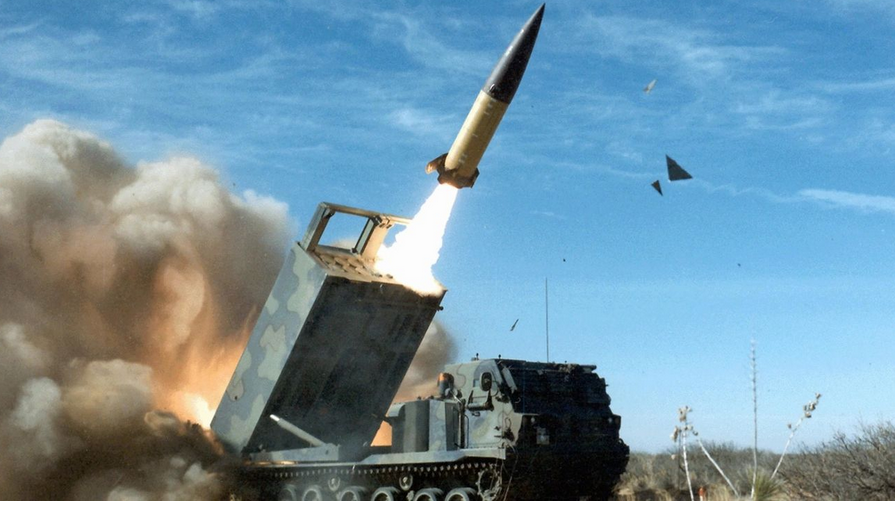Ukraine is once again demonstrating its ability to effectively use military potential on Russian territory. Last night, Ukrainian drones attacked an oil depot in occupied Feodosia. The burning Feodosia oil depot, located near the village of Berehove, is the largest in transshipment of oil products in occupied Crimea, with cumulative storage tank volume capacity of 250 thousand cubic meters. This is not the first attack on this facility: in March 2024, drones already damaged the main pipeline at this base, as well as in November and December last year. Because of the latest attack, massive fire, blocked streets, a state of emergency was declared.
These actions show that Ukraine is not only is kept afloat, but is also actively developing its military capabilities thanks to cooperation with partners. For example, the German Rheinmetall recently announced the construction of several new factories in Ukraine. Among them is an ammunition plant for artillery shells, armored vehicles, and air defense systems. It is also planned to create facilities for repairing and assembling armored vehicles and producing gunpowder charges. Another important step is a memorandum of understanding between Ukraine and Denmark, according to which 600 million euros will be allocated for the development of the defense industry of Ukraine. These funds will be used to increase the production of combat drones, missiles, and anti-tank systems. In addition, the Netherlands recently provided Ukraine with F-16s, and another 24 fighters are expected to be delivered in the coming months. It should be noted that the Netherlands has allocated 400 million euros for the development of modern drones jointly with Ukraine.
Western countries see Ukraine’s successes and continue to provide financial and military support, including advanced weapons systems and military trainings. But despite this, it remains insufficient. Victory requires more weapons, air defense systems, more funds to strengthen defense capabilities, as well as more modern weapons, including tanks, combat vehicles, and long-range missile systems. It is also critical to ensure sustainable logistics solutins in order to maintain a high level of combat readiness of Ukrainian forces on the front lines.
On October 12, the historic 25th meeting in the Ramstein format will take place, and for the first time at the level of heads of state under the leadership of US President Joe Biden. Ukrainian President Volodymyr Zelenskyy will present the Victory Plan — a document proposing a fair end to the war and the full restoration of Ukraine’s territorial integrity. This plan deserves their unconditional support, since there is no other path to lasting peace.
In contrast, the Chinese “peace plan” is aimed more at improving China’s international image and countering Western criticism. It does not address the main issues, such as bringing the aggressor to justice and the return of the occupied territories, and, in fact, serves as a tool for Beijing’s diplomatic gain. China avoids direct involvement in the conflict, but continues to support Russia diplomatically. Its strategic interest is to maintain partnership with Moscow and minimize risks to its own economy and of international influence.
It is especially important to decide on granting Ukraine permission to use long-range weapons against military targets on the territory of the Russian Federation at the upcoming Ramstein. Countries such as the United States, Great Britain, Germany, France, Italy and other allies must give a definite “yes”. After all, Ukraine is holding back the aggressor and preventing it from expanding its ambitions.
For example, Poland is increasingly aware of the threat posed by the Russian Federation. Warsaw is actively strengthening its eastern border with Russia and Belarus as part of the East Shield program in response to the growing danger. The construction of fortifications, the installation of surveillance, reconnaissance and counter-drone systems are aimed at increasing the country’s defense capability and protecting against potential threats, which underlines Poland’s serious attitude to the security of its borders. Deputy Defense Minister Cezary Tomczyk noted that the construction of the first fortifications would begin this year, together with the Baltic states, as well as British and American troops, in order to finish it by 2028.
In addition to strengthening the border, Poland also plans to increase the size of its army to be ready for any possible threats. The focus is on increasing defensive capabilities and ensuring the security of not only Polish citizens, but also the entire NATO eastern border. Poland has already increased its defense spending to 4 % of GDP, which is one of the highest rates among EU countries.
Only joint efforts of partners against Russian aggression are the most effective way to protect not only Ukraine, but the entire free world. It is not an option to strengthen defense separately, but a common strategy based on coordinated actions, exchange of experience and resources can significantly increase the effectiveness of defense measures. Ukraine is at the forefront of this fight, protecting its independence and deterring the aggressor from future threats to Europe. The Ramstein meeting is an excellent opportunity to make decisions that would allow a just peace to be closer, providing Ukraine with the necessary support.

